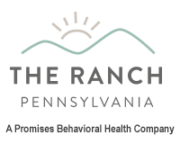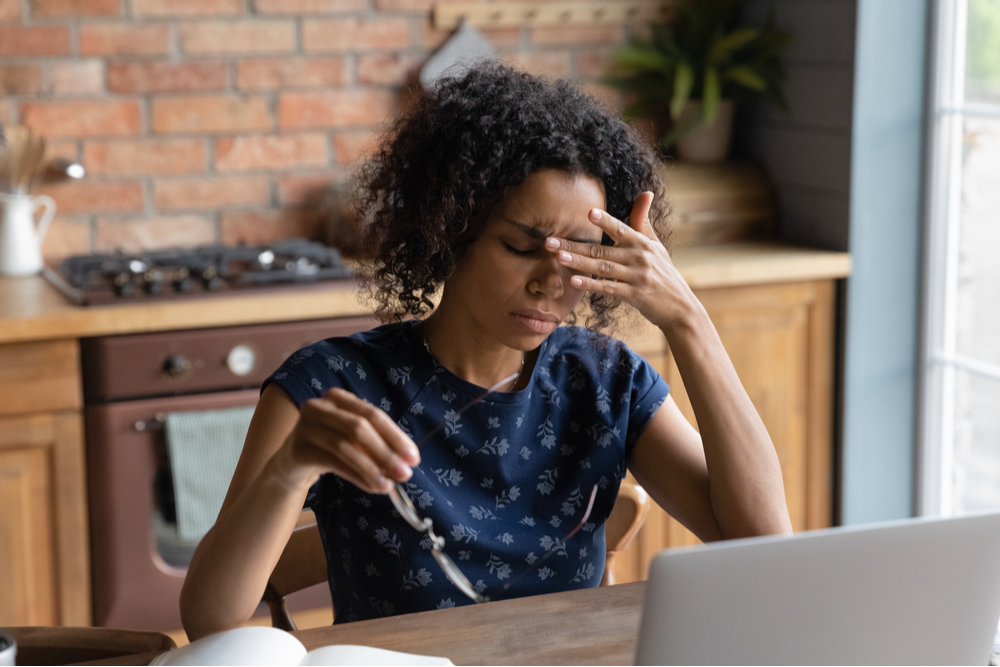What are the six important things to look for in effective treatment centers for substance use disorder? If you or a loved one struggles with a substance use problem, it’s difficult to think straight, let alone make a big decision like finding the right treatment program.
What does it look like to face such a big decision like treatment?
Meet Tamika
Tamika is tired, and that’s an understatement. She’s been dealing with her 18-year-old daughter’s problem with drugs for the past two years. Last week, her daughter nearly died after overdosing on a combination of Xanax and fentanyl.
Now, as she tries to digest the situation’s heavy reality and take care of her other two children, Tamika must sort out insurance and narrow down the best addiction treatment program. Tamika is a single mom with little emotional or financial support. Her ex-husband, someone with an untreated substance use disorder, isn’t in the picture. He was physically abusive to Tamika during their marriage, something the children witnessed. Tamika is overworked, exhausted and short on money.
Finding an effective treatment center
Fortunately, the courts intervened to force Tamika’s adult-age daughter to participate in an inpatient substance use disorder treatment program. Otherwise, she probably wouldn’t go.
Deciding on an addiction treatment center for yourself or a loved one is a big life decision, and you want the choice to count.
The Ranch Pennsylvania, is here to help you narrow down your choices by providing some easy-to-follow guidelines. Let’s help Tamika make the right choice around an effective addiction treatment program.
Priority 1 for effective treatment : Basic standards of care
Is the program nationally accredited? Do they follow the standards set by the Commission on Accreditation of Rehabilitation Facilities (CARF) or the Joint Commission? If not, keep looking.
Accredited addiction treatment programs have passed evaluations that require a specific baseline level of patient care. You want to find a treatment program that meets or exceeds these standards.
There are some easy boxes to tick off when it comes to the essential treatment program criteria. The easiest is accreditation.
For more information about accreditation, visit the CARF website.
Priority 2: Find an appropriate program for the substance
Because Tamika’s daughter mainly abuses opiates, the appropriate recovery program will include a specific treatment plan for opiate use disorder. The program will begin with opiate detoxification. In Tamika’s case, her daughter will have started detox in her local hospital after the overdose.
Still, transferring her to another facility requires a knowledgeable, experienced staff waiting to pick up where the local hospital left things.
Quitting opiates should not be done without the care of a specialized team of treatment professionals. Choosing anything less could be fatal for Tamika’s daughter.
Opiate withdrawal is a serious undertaking.
Because opiates cause physical addiction, detoxification means the body’s nervous system must recover. Symptoms include excessive sweating, trouble sleeping, nausea, anxiety, body aches and more.
Safely detoxing in the right environment with a team of medical and addiction treatment professionals is an absolute—and another easy box to check.
Make sure the program has a component for the specific drug problem. For example, alcohol addiction, opiate addiction and meth addiction all look a little different in terms of detox and treatment.
Priority 3: Caring staff
Recovery from any substance use disorder is a challenge. Most people in recovery find it the most challenging time in their lives. Make certain the staff at the inpatient substance use recovery program is caring.
The last thing anyone needs as they try to navigate the world without the help of a substance is the shaming or insensitivity of the people around them.
Addiction is a disease. No one sets out to harm themselves or loved ones. Recovery isn’t a matter of willpower. Read this 2017 University of Michigan article, “Science Says: Addiction Is a Chronic Disease, Not a Moral Failing,” by Jillian Hardee, Ph.D., for more information.
The staff of a decent treatment program will approach patients with kindness, compassion, and support.
Tamika should feel she has gained a team of caring friends when she talks to staff about her daughter’s situation. Both Tamika and her daughter must feel safe to heal. Primary therapists, nurses, resident assistants and treatment alumni specialists must all work diligently to create a safe space for healing to take place.
Look for caring staff.
Priority 4: Age and family considerations
Tamika’s daughter is only 18. Tamika needs a program giving her daughter the very best chance at long-term recovery. A program with addiction recovery professionals experienced with adolescents and young adults will be the most effective.
Tamika will need support and education as her family moves forward.
Look for a program with a substantial family element. Meaning, Tamika, and maybe even her younger children, will also learn about addiction. Everyone will get a beginning course on the recovery process. Family members should feel a part of the recovery process; this is especially true if Tamika’s daughter plans on moving home at some point. Without the proper support, everyone in the family is vulnerable to falling back into old patterns.
Family members need a recovery plan too. Tamika, especially as a single mom, will likely need counseling and outside support from other individuals in similar situations. Whether she gets this support through a 12-step program like Al-Anon or group therapy doesn’t matter. What’s important is that she knows where to find the help when she needs it.
Plus, because of Tamika’s adolescence, having other similarly-aged individuals around, who are also recovering from opiate use disorder, will allow Tamika’s daughter to build a meaningful support team.
If Tamika’s daughter is placed in a recovery group with other recovering individuals all over the age of 50 years old, for example, she may not connect as well. Similarly, an addiction recovery professional who has only worked with an older population likely won’t have the best approach.
One end-goal of treatment is to give the recovering person a strong foundation of support as they move back out into the world. While she doesn’t need to be entirely surrounded by adolescents, her age should factor into her care and patients’ group.
Priority 5: Interests and self-care for effective treatment
Yes, looking at the recreational classes available for Tamika’s daughter may seem like unnecessary criteria, given she nearly died. However, the nature of inpatient treatment means Tamika’s daughter will gradually feel stronger. As she gets her strength back, having healthy hobbies and a means of self-care will play a big part in her recovery.
In this case, anxiety played a part.
Tamika’s daughter often used substances to mask feelings of anxiety and panic attacks.
When someone has been lost in the use of any drug, life gets turned upside down. Tamika’s daughter is likely filled with plenty of self-loathing for her past behavior. A healthy lifestyle includes a turn away from this self-abuse with healthier, constructive activities like walking, meditating, and more.
A solid addiction treatment recovery program will include activities like art therapy, exercise, and mindfulness instruction. In this way, Tamika’s daughter gets to try out her new coping mechanisms in a safe environment.
Hopefully, some of this activity will provide relief and give her the confidence to continue after treatment.
Learn more about the role exercise plays in addiction recovery in the article, “Group Exercise to Improve Quality of Life in Addiction Patients,” published by Recovery Research Institute.
Priority 6: Individualized care and aftercare plan
Recovery from a substance use disorder is a chronic, lifelong condition. And, everyone’s recovery looks a little different with different necessary ingredients for success.
For Tamika’s daughter, she needs an accredited program with a caring staff. The program must have a specific opiate use recovery program with experienced medical professionals managing detoxification. The staff should also have some experience working with adolescents. A program with some extra attention to family members and self-care activities is necessary for Tamika’s family to have the best odds.
There are other factors, though, which must
be individualized to set up success.
For instance, Tamika’s daughter has a history of self-harm. Plus, Tamika’s ex-husband was physically abusive to Tamika and still has an untreated substance use disorder himself. These issues play a big part in Tamika’s current family issues.
Tamika’s daughter learns in treatment how to safely explore the feelings she has around the childhood trauma she experienced. Her individualized plan includes cognitive behavioral therapy (CBT) to work past some negative patterns of thinking Tamika’s daughter carries about herself.
For information on the recovery of trauma and substance use disorders, read “PTSD and addiction: an integrated treatment approach,” published by the Recovery Research Institute.
Her doctors and addiction recovery therapist suggest daily meditation to ease some of the anxious thoughts, which used to lead to self-harm.
This tailored plan isn’t set in stone. Adjustments are made during treatment, depending on what works and what doesn’t.
A successful in-treatment plan helps with the creation of a solid aftercare plan.
In aftercare, Tamika’s daughter attends group therapy with other young women in addiction recovery. She also attends weekly individualized therapy sessions to deal with some past pain around her dad’s abandonment. Non-addictive anxiety-reducing medication is also prescribed.
If you’re looking for an addiction treatment recovery program for yourself or a loved one, don’t hesitate to ask for help. Ask questions, explore what’s available. Give yourself plenty of self-love for taking these hard steps.
At The Ranch Pennsylvania, we want you to have the best treatment experience possible and teach you the tools to live a healthy life afterward.
We can help. Call us today at 888.483.7757.
By Heather Berry
Contributing Writer with Promises Behavioral Health

